I'm trying to draw on a window with Gtkmm for C++, cairo::context, gdk::pixbuf. I've noticed that for some widths (in my example 298), instead of my image, I get some horizontal black lines (alternated with white stripes).
For other widths (in my example 300) I get a normal image. (I'm just drawing a yellow background in my example).
What am I doing wrong ? How can I obtain to draw correctly for any image width ?
I'm finding this behavior both on :
windows 10 / msys2 / gcc11.2 / std=c++20
opensuse 15.2 / gcc 11.2.1 / std=c++17
and on both I have library versions:
-I/usr/include/gtkmm-3.0 -L/usr/lib64 -I/usr/lib64/glibmm-2.4/include -I/usr/include/glibmm-2.4 -I/usr/lib64/glib-2.0/include -I/usr/include/glib-2.0 -I/usr/include/sigc++-2.0/ -I/usr/lib64/sigc++-2.0/include -I/usr/include/giomm-2.4 -I/usr/lib64/giomm-2.4/include -I/usr/include/gdkmm-3.0 -I/usr/lib64/gdkmm-3.0/include -I/usr/lib64/pangomm-1.4/include -I/usr/include/gtk-3.0/ -I/usr/include/pango-1.0 -I/usr/include/cairo -I/usr/include/gdk-pixbuf-2.0 -I/usr/include/cairomm-1.0 -I/usr/include/cairomm-1.0/cairomm -I/usr/lib64/cairomm-1.0/include -I/usr/include/freetype2 -I/usr/lib64/gtkmm-3.0/include -I/usr/include/pangomm-1.4 -I/usr/include/harfbuzz -I/usr/include/atkmm-1.6 -I/usr/include/atk-1.0 -I/usr/lib64/atkmm-1.6/include -LC:/programs/msys64/mingw64/bin -lgtkmm-3.0 -lglibmm-2.4 -I/usr/include/sigc++-2.0 -lsigc-2.0 -lgdkmm-3.0 -latkmm-1.6 -lcairomm-1.0
Here's my code:
#include <gtkmm/application.h>
#include <gtkmm/fixed.h>
#include <gdkmm/pixbuf.h>
#include <gtkmm/window.h>
#include <cairomm/context.h>
#include <giomm/resource.h>
#include <gdkmm/general.h>
#include <iostream>
class TesterWindow : public Gtk::Window
{
public:
TesterWindow()
{
int width = 298; // lines
// int width = 300; // yellow
int height = 300;
set_size_request(width, height);
try
{
m_image = Gdk::Pixbuf::create(Gdk::COLORSPACE_RGB, false, 8, width, height);
auto pixels = m_image->get_pixels();
int channels = 3;
for(int i = 0; i < width * height * channels; ++i)
{
switch(i % 3)
{
case 0 : pixels[i] = 255; break;
case 1 : pixels[i] = 255; break;
case 2 : pixels[i] = 0; break;
default : break;
}
}
}
catch(const Gio::ResourceError& ex)
{
std::cout << "ResourceError: " << ex.what() << std::endl;
}
catch(const Gdk::PixbufError& ex)
{
std::cout << "PixbufError: " << ex.what() << std::endl;
}
}
void show()
{
set_position(Gtk::WIN_POS_CENTER);
show_all_children();
}
bool on_draw(const Cairo::RefPtr<Cairo::Context>& cr)
{
if(!m_image) return false;
Gdk::Cairo::set_source_pixbuf(cr, m_image, 0, 0);
cr->paint();
return true;
}
private:
Glib::RefPtr<Gdk::Pixbuf> m_image;
};
int main(int argc, char** argv)
{
auto app = Gtk::Application::create(argc, argv, "org.gtkmm.example");
TesterWindow window;
window.show();
return app->run(window);
}

